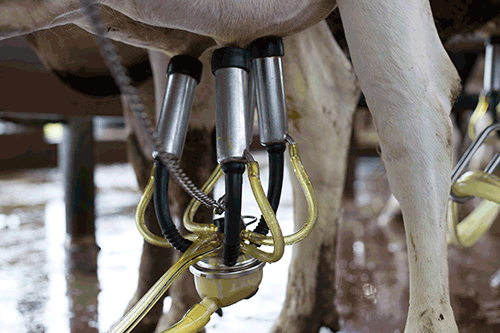
"Milk quality is a topic of continued debate that poses significant problems for the sustainability of the Southeastern dairy industry," noted Steve Oliver, University of Tennessee, at the Southeast Milk Quality Initiative's (SQMI) recent meeting.
A collaboration among six Southeastern universities, SQMI is a four objective program aimed at improving the somatic cell count and milk quality of dairies in a fluid-based market.
The program's first objective was to identify economic, social and psychological factors that limit the adoption of practices known to control mastitis. A team, headed by Susan Schexnayder, also with the University of Tennessee, developed a survey, which attempted to tease out barriers to adopting SCC control practices.
When it comes to mastitis, 92 percent agreed that it is a significant concern to the dairy industry in the Southeast. A similar percentage noted that it is extremely important to reduce the number of clinical mastitis cases on farm. "There was more emphasis on lowering clinical cases than improving bulk tank SCC," noted Schexnayder.
Going further down the list, 66 percent of the farmers surveyed noted that their dairy has had a serious mastitis problem one or more times. Additionally, only 65 percent of producers believed mastitis was currently under control at their dairy.
A high proportion of respondents agreed that weather and climate play an important role in mastitis outbreaks and that these climatic factors were more important than things they can control. However, younger producers tended to feel there was more they could do to control outbreaks, while older producers tended to blame outbreaks on bad luck.
There was a small positive correlation with current SCC for dairies that agreed with the statement that mastitis causes are difficult to manage, and for those that weren't sure of the proper parlor procedures to implement in mastitis control.
When it came to producers' experience with and evaluation of SCC and mastitis control measures, disinfecting teats, using hygienic supplies, culling, dry period treatment, employee training and treating clinical mastitis cases were the most widely implemented.
The practices that were rarely or never adopted included keeping milking cows and treated animals in separate groups, conducting employee evaluations, culturing and using vaccines to control mastitis.
A third sector of control measures, those that are effective but deemed impractical, were adopted at one time but soon fell by the wayside. The discontinued practices included the use of teat sealants, antibiotic therapy for clinical cases, coliform pathogen vaccination and culturing.
Culling, separating cows and waiting to treat based on culture results also fell into the effective but impractical category.
Furthermore, employee training on the proper milking procedures, delegation of responsibilities and employee evaluations were believed to be ineffective.
Schexnayder also evaluated producers most trusted information sources. Vets topped the list at 90 percent. Milk co-op representatives (50 percent), extension agents (30 percent) and online information (10 percent) fell far behind the trust placed in veterinarians.

The author, Amnda Smith, was an associate editor and an animal science graduate of Cornell University. Smith covers feeding, milk quality and heads up the World Dairy Expo Supplement. She grew up on a Medina, N.Y., dairy, and interned at a 1,700-cow western New York dairy, a large New York calf and heifer farm, and studied in New Zealand for one semester.








